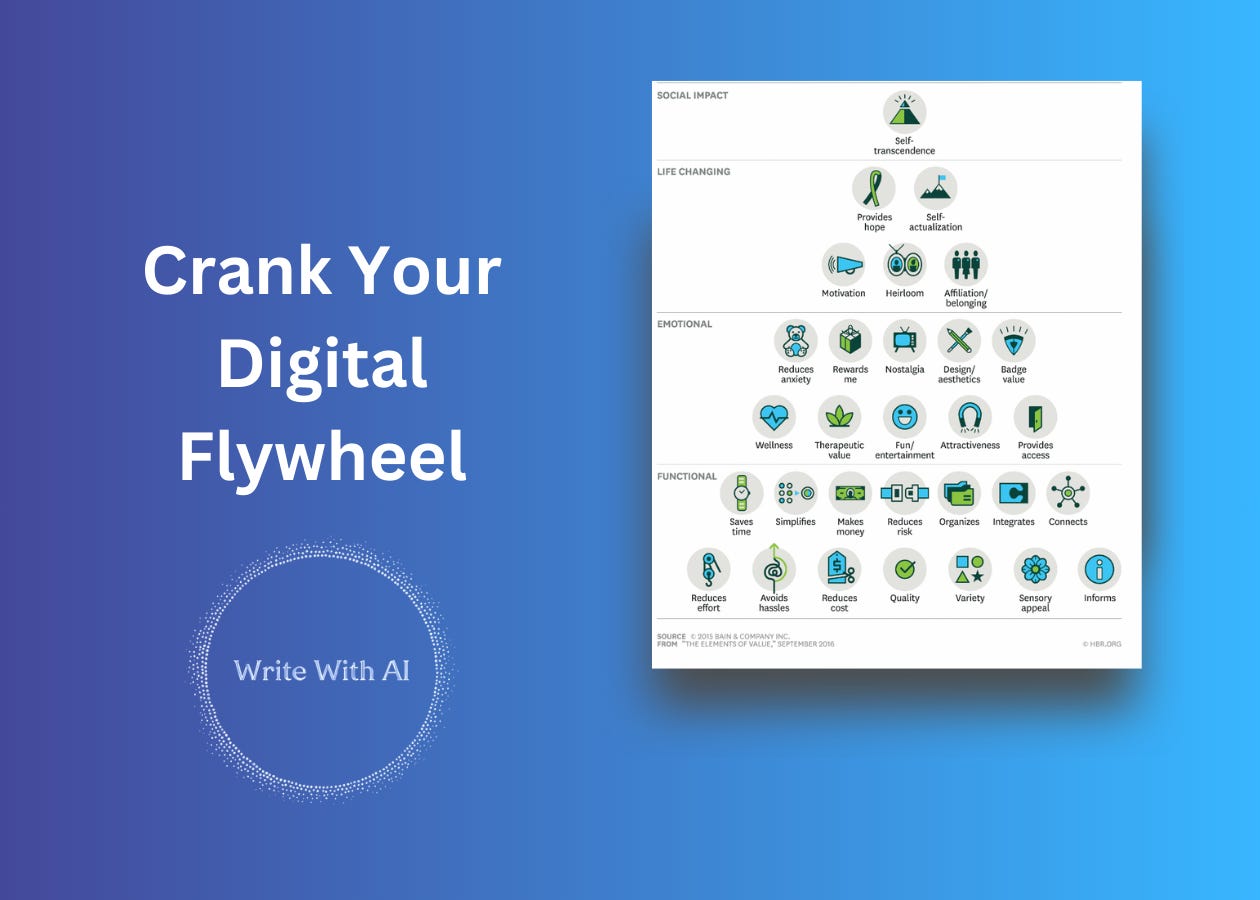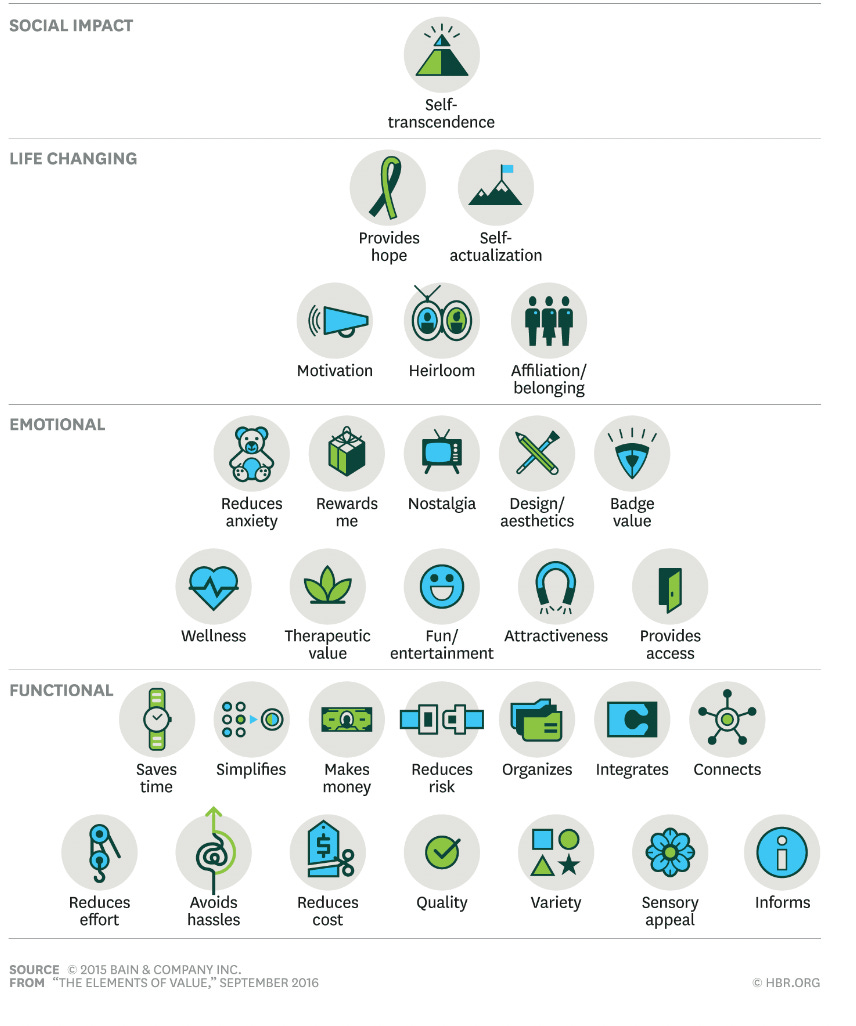Build A Lead Generating Content Library
HBR’s 30 Elements Of Value Pyramid
Ahoy, Digital Writers!
You want to go viral.
So you can get more followers.
So your business grows.
It’s logical, right?
The problem is that going viral isn’t the game.
The real game is to build a library of content that answers every single question your target reader/customer has—before they ever choose to buy from you. When you address their pain points, desires, and uncertainties upfront, you earn their trust and interest. Closing a sale becomes 100X easier and a natural next step.
Unfortunately, most people don’t do this. They create content haphazardly with no specific audience in mind, hoping any shares and likes will magically translate into leads and revenue. This is the wrong way to approach content creation for your business.
Instead, you need to think about content as a "lead generation flywheel."
Every piece of content should strategically attract your ideal customer.
2-Steps To Build A Lead Generating Content Library
So, how do you create an educational content library that generates leads?
The framework is simple.
Step 1: Make a list of all the common questions your prospects have.
Step 2: Then answer them by writing content that provide tips, stats, steps, lessons, benefits, reasons, examples, and personal stories related to the question.
That’s it.
For example, if you ghostwrite Educational Email Courses for gym owners then a question your potential client might ask would be "Will an Educational Email Course work for a cross-fit gym?" To answer the question you write a piece outlining "3 Reasons An Educational Email Course Helps Cross-Fit Gym Owners Retain Members 3X Longer" and list out those reasons based on your expertise. When clients inevitably ask that question, you've already answered it through your library of content.
And, guess what?
Your customers will read one useful piece, then binge the rest of your related content. Because if you answer their first question really well, they'll believe you have the answers to all their questions. This is the power of a lead generation flywheel.
But how do you identify all the different questions and objections your target audience needs addressed through content?
The 30 Elements Of Value Pyramid
One powerful approach is to use the "Elements of Value" framework from the Harvard Business Review.
The "Elements of Value" outlines the key dimensions and "building blocks" that shape a customer's perceived value of engaging with your content and ultimately their buying decision for your products and services.
By going through each element or "building block" of value, you can start to imagine the specific questions and concerns your customers likely have related to that element.
For example:
Level 1: Functional Elements Questions about core product features, quality, price, convenience. "How does this product/service actually work?" "What are the key benefits compared to alternatives?"
Level 2: Emotional Elements Questions about the experience, reducing anxiety, attractiveness. "Will using this make my life easier/less stressful?" "How will this make me feel?"
Level 3: Life-Changing Elements Questions about motivations, connecting with deeper values. "How will this product/service improve my life in meaningful ways?" "Does this align with my core goals and priorities?"
Level 4: Social Impact Elements Questions about social responsibility, environmental impact, "What positive impact does this company have on society/the planet?" "Does purchasing this make me a better global citizen?"
So, when it comes to building your content library, all you have to do is brainstorm all those potential questions for each value element and then start creating content to directly address every single one to walk your audience through the total perceived value of your product/service straight to the sale.
If this sounds like a lot, it is!
But you don't have to go through the brainstorming process alone. AI can help you rapidly generate relevant questions and angles based on the Elements of Value for your specific product or service.
Here's how:
How To Fill Your Content Library With 210 Short-Form Posts Using The Elements Of Value Pyramid (And AI)
We are going to do this in 3 steps.
Brainstorm questions using the Elements of Value
Fill a 30-day content calendar with those questions
Write 7 short-form pieces of content for each day
In 30 days, you’ll have 210 relevant pieces of content cranking your digital flywheel.
Let’s break it down.
Keep reading with a 7-day free trial
Subscribe to Write With AI to keep reading this post and get 7 days of free access to the full post archives.




